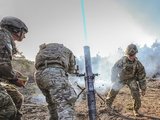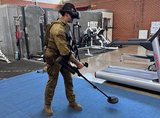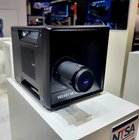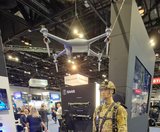Cubic tailors mortar simulator for the US Army
The company’s mortar trainer received improvements based on soldier’s feedback.
The Advanced Stinger Trainer can train up to four interoperable Stinger teams simultaneously within its 360° high-resolution VR. (Photo: US DoD)
BlueHalo has been awarded a US$30 million contract from the Netherlands Ministry of Defense Materiel and IT Command to develop and deliver an Advanced Stinger Trainer (AST) system at Lieutenant General Best Barracks in Vredepeel, Netherlands.
The next-generation AST is a fully immersive Man-Portable Air Defense System (MANPADS) operator training system aimed at providing Stinger users with operational and tactical training.
AST can train up to four interoperable Stinger teams simultaneously within its 360° high-resolution VR environment. Gunners in the simulation would use an untethered MANPADS replica with the same size, weight and operational functions as a Stinger missile, while team leads use binoculars with positional auto-zoom to guide their gunner to targets as they would in active combat scenarios.
AST features a fully integrated Instructor Operator Station (IOS), providing instructors with control of the environments, threats, and difficulty for each scenario along with detailed scoring and analytics from each session.
BlueHalo has developed similar Stinger training facilities for the US Army Air Defense School at Fort Sill, Oklahoma, the North Dakota Army National Guard in Grand Forks, and the US Marine Corps at Camp Pendleton, California and Cherry Point, North Carolina.

The company’s mortar trainer received improvements based on soldier’s feedback.

The company will operate in two new locations in the coming years to better support US services.

This type of tool provides more realistic training easing the incorporation of new scenarios that accurately represent the threats of the battlefield.

The Engineering Corps has been conducting individual instruction using FLAIM Systems’ Sweeper and should start collective deployments in 2025.

The next-generation platform is motion-compatible and can be used in OTW and NVG applications.

The system can be used to prepare soldiers for both drone offensive operations and CUAS missions.